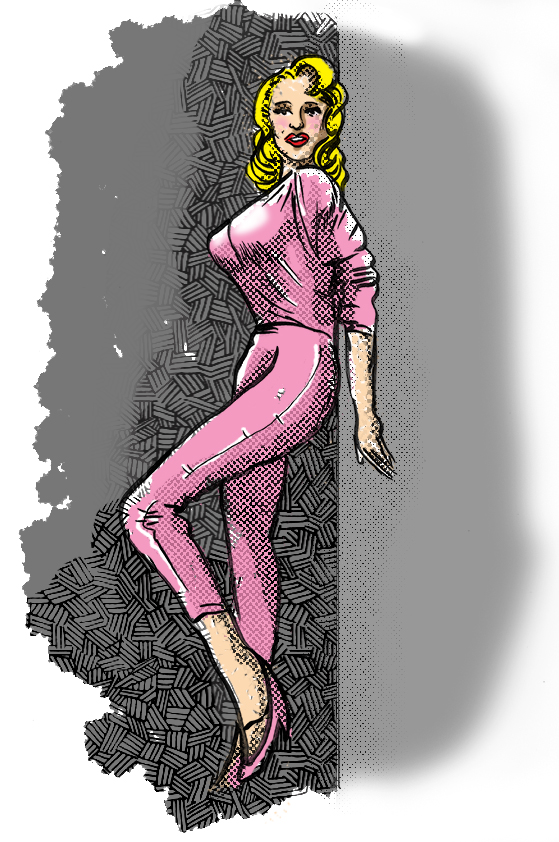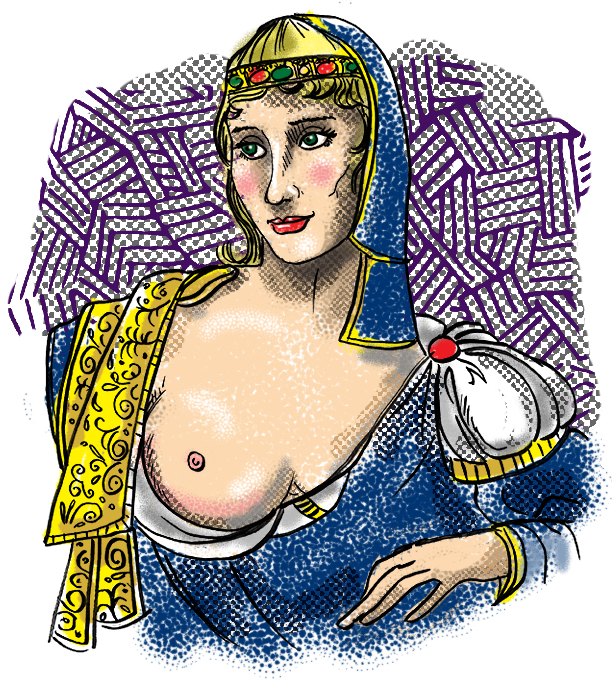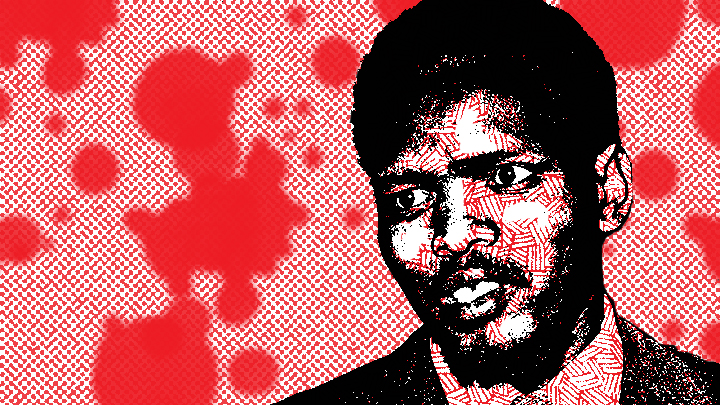DCS: sabrina

Capitalizing on the worldwide popularity of Marilyn Monroe, the former Norma Sykes shot to stardom as “Sabrina.” She, along with Diana Dors and Shirley Eaton, became England’s answer to the “blonde bombshell.” Cast as the “dumb blonde” on comedian Arthur Askey’s popular TV series Before Your Very Eyes, Sabrina became a household name in the middle 1950s. Sabrina was the BBC’s “go-to” girl and England’s male population offered no argument. Sabrina’s name was often invoked as a punchline in numerous skits on the popular Goon Show, usually with the exclamation: “By the measurements of Sabrina!”
Soon, Sabrina appeared in movies, including an equal-billing role with Alastair Sim in 1957’s Blue Murder at St. Trinian’s. in the film, Sabrina’s character sat in bed wearing a nightgown while she read a book. She had no lines of dialogue and the film’s action went on around her. She later co-starred with Troy Donahue in the western The Phantom Gunslinger. Her last film appearance was in a horror movie called The Ice House, in a role originally written for the late Jayne Mansfield.
Sabrina married a Hollywood gynecologist in 1967. The marriage lasted a decade before ending in divorce. No longer wanted by Hollywood, Sabrina lived a reclusive life, moving to Burbank and shunning family and friends. Reports of the former star living in squalor ran through the tabloids.
Sabrina had several operations to relieve the back pain that she suffered through most of her life, due, in part, to her prominent chest. In 2016, Sabrina died from blood poisoning after one of those procedures went awry. She was 80 years old. News of her death made the papers almost one year after the fact.
Comments
inktober 2023: week 1
Summer is over and October is upon is. The leaves are changing. The hot temperatures of July are yielding to cool breezes that bring a nip to the air. The sun is setting at an earlier time and everything is flavored with pumpkin spice. Well, everything has been flavored with pumpkin spice since the third week of August, but that’s a story for another blog.
October also kicks off the annual “Inktober” event for artists around the globe. Every year since 2009, the official Inktober website has been offering single word suggestions to artists to create a daily drawing throughout the month of October. I discovered Inktober in 2014 and have been participating every year every since. (I also contribute to their weekly challenge of “Inktober 52.”) However, because I am lazy (and happy to make that admission), I make up my own rules for Inktober. Come to think of it, I make up my own rules for a lot of things.
I will be posting a new, black & white drawing (and a little bit of color here and there) each week for the entire month – in addition to my participation in the regular Inktober 52. Every year, I choose a theme in keeping with the “spirit” of the Hallowe’en season. This year, my drawings will highlight a few of the many horror-related television series that have graced the small screen almost since the invention of the cathode ray tube. I’ll begin this Week 1, with the godfather of spooky anthology series – Twilight Zone and its host Rod Serling.
Although it was not the first of television’s creepy anthologies, it is arguably the best known and most beloved. Rod Serling, a respected writer himself, assembled a group of science-fiction and horror authors to write original tales or adapt existing ones in an effort to scare the crap out of Mr. and Mrs. Post-War-Fear-Everything American in the paranoid early 1960s. With a slew of now-recognizable actors like Robert Redford, Martin Landau, and the ubiquitous Burgess Meredith, Twilight Zone presented aliens, ghosts, immortals and time travelers in thought-provoking stories geared towards frightening viewers amid the safety of Leave It to Beaver and Father Knows Best. After five seasons of fighting with network censors, Rod Serling had had enough. After 156 episodes, he was finished, setting his sights on his next project – another anthology series with a more lurid, in-your face lean called Night Gallery. But, Twilight Zone wasn’t satisfied with cancellation. It lived on in reruns, as well as three more network revivals and a theatrical film.
Comments
inktober52: dream
Comments
DCS: sammy and solly drake

Solly Drake had dreams of becoming a professional baseball player. So did his younger brother Sammy.
As a teenager, Solly played for the Elmwood Giants, a minor league team, before he was signed to the farm system of the Chicago Cubs. In 1956, the wiry, switch-hitting outfielder made his major league debut with the Cubs, primarily used as a pinch-hitter. He bounced between the major and minor leagues for most of his career, until he announced his retirement following the 1961 baseball season.
In Solly’s final season, his brother Sammy was also signed by the Cubs. He played sporadically, mostly appearing in games as a pinch-runner. He was sent to the New York Mets, as part of the league expansion, but like his brother, Sammy moved between the minors and majors. He played in 25 games in a single season with the Mets and left baseball at the end of the 1962 season. After ending his baseball career, Sammy entered government service with a position in the United States Department of Housing and Urban Development.
Sammy and Solly Drake faced racism throughout their minor and major league baseball careers. They hold the distinction of being the first African-American brothers to play in the majors.
Sammy passed away in 2010 at the age of 75. Solly lived until he was 90, passing away in August 2021.
Comments
inktober52: harvest
Comments
DCS: agnès sorel

King Charles VII ruled France from 1422 until 1461, with his wife Queen Marie d’Anjou. The King, however, had a little something on the side. And that “little something” was Agnès Sorel.
Agnès was a 20 year-old “social climber,” who was known as Dame de beauté (Lady of Beauty). As was common at the time, Agnès was an intimate companion of the King. In fact, she became the first “official” Royal Mistress, though her duties included serving as “lady-in-waiting” to the Queen. But there was no waiting for Agnès or King Charles. Agnès bore the King four children during the course of his reign. Agnès also served as an advisor to King Charles on matters of state.
Agnès also fancied herself a fashion innovator and trend setter. She had dresses designed to her specifications. She popularized low-cut gowns for women, but hers were specially cut so one of her breasts was fully exposed. This was scandalous in the eyes of the King’s staff and other officials, especially Jean Juvénal des Ursins, the archbishop of Reims, who demanded that Agnès be forced to cover up. King Charles would have none of it. Agnès’s presence had brought the King out of a long depression, but her behavior made her many enemies.
Agnès died at the age of 28, the cause of which is debated. Some reports claimed she died of dysentery, a common malady of the time. Others say she was poisoned by enemies… another fairly common cause of death at the time.
Comments
inktober52: fear
Comments
DCS: jo ann marlow

In 1939, four-year old Jo Ann Marlow was discovered by a director from Warner Brothers Studios while on a family vacation to Hollywood. Star struck, her family relocated to Southern California and little Jo Ann made her motion picture debut in Yankee Doodle Dandy playing a younger version of Jeanne Cagney’s character “Josie.” She would go on to appear in over a dozen more films including 1946 Best Picture Mildred Pierce, the Cole Porter biopic Night and Day and the big screen adaptation of Somerset Maugham’s Of Human Bondage.
In the early 1950s, Jo Ann left her show business career for Loyola University and a law degree. After graduation, she soon became Chief Trial Lawyer for the U.S. Attorney’s Office in Los Angeles. She had no desire to return to her life in Hollywood and she had no regrets.
In 1968, just after finalizing her divorce, Jo Ann was involved in a serious car accident that left her in a coma. She remained in a coma for the next 22 years until her death in January 1991 at the age of 56.
Comments
DCS: steve biko

When I try to sleep at night/I can only dream in red
Steve Biko only wanted what was right.
As a student at University of Natal, he was an active participant in anti-apartheid rallies and demonstrations organized on campus and beyond. He was at the forefront of the Black Consciousness Movement, a vocal opponent of apartheid. Under the pseudonym “Frank Talk,” Steve wrote and published articles expressing his views.
In the late 1960s, Steve was instrumental in the development of South African Students’ Organisation (SASO), a group focus on unifying activities among black college students. He continued his efforts to promote equality, adopting the phrase “Black is Beautiful” from a movement in the United States and making it an international slogan for his cause.
The government of South Africa sought to stop Steve Biko.
Steve was arrested at a roadblock specifically set up to trap him. He was taken to a police station, where he was beaten and interrogated relentlessly. In early September 1977, Steve was transferred to a police facility in Port Elizabeth. He was shackled and beaten for approximately 22 hours. Police officers later claimed that Steve attacked an officer, but that was impossible. His movements were greatly restricted by the manacles on his wrists and ankles. A government doctor examined him, stating he could find no physical injuries.
Steve died alone in a cell on September 12, 1977. He was 30 years old.
Steve Biko’s dream was that the Black Consciousness Movement would not degenerate into anti-white racism. He wished for a positive course of black self-confidence, with no hatred of anyone.
